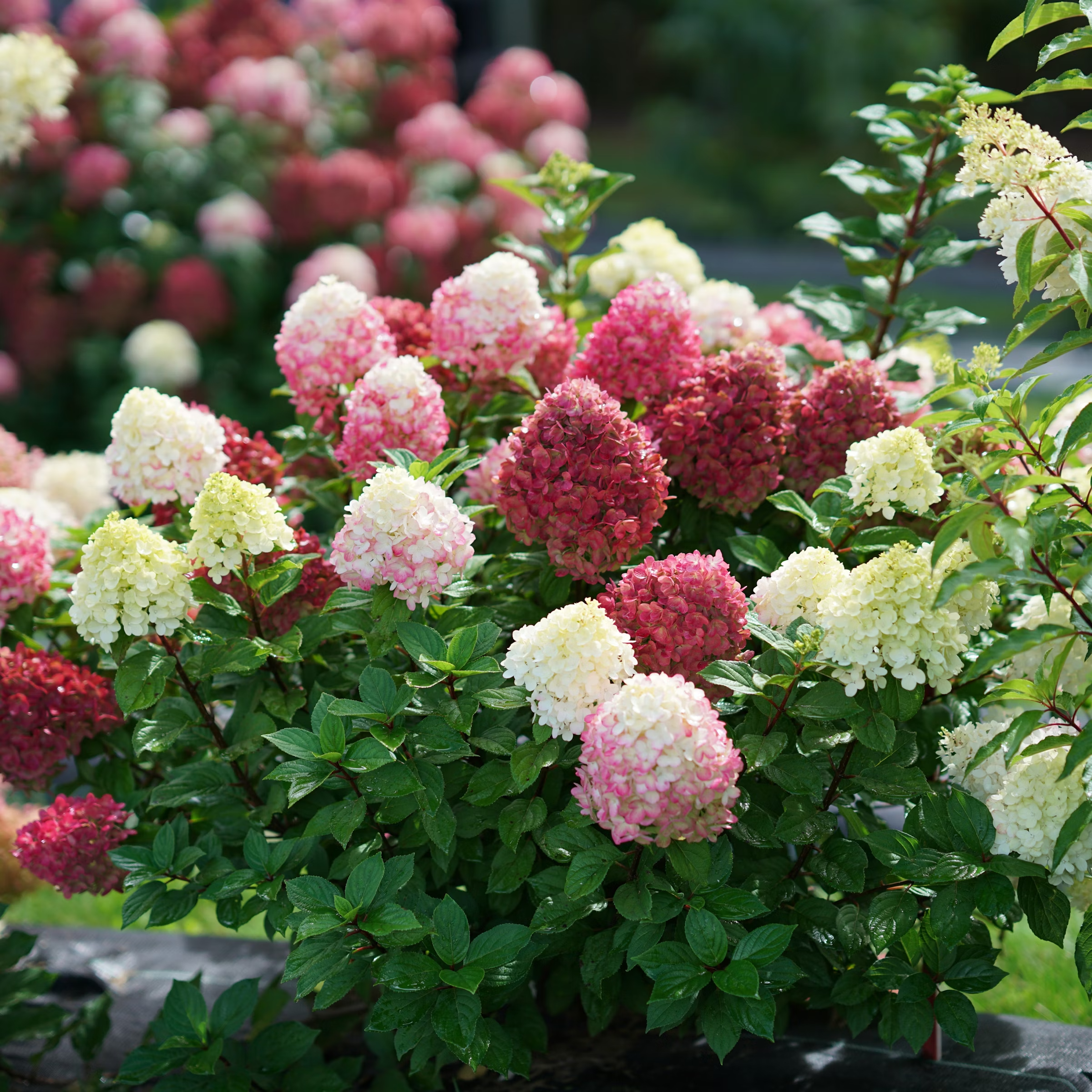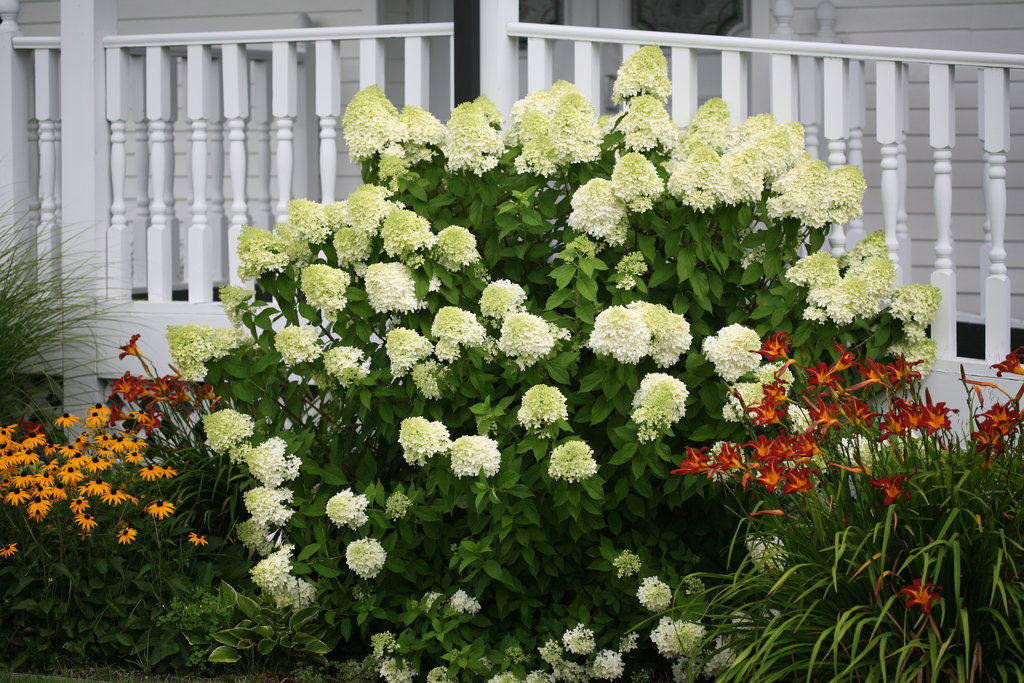How To Grow Little Lime Hydrangeas For A Splash Of Citrus That’s Perfect For Pots
'Little Lime' hydrangea is the perfect fit for compact gardens. Its electric green blooms shine in pots or tucked into a sunny corner of the garden.
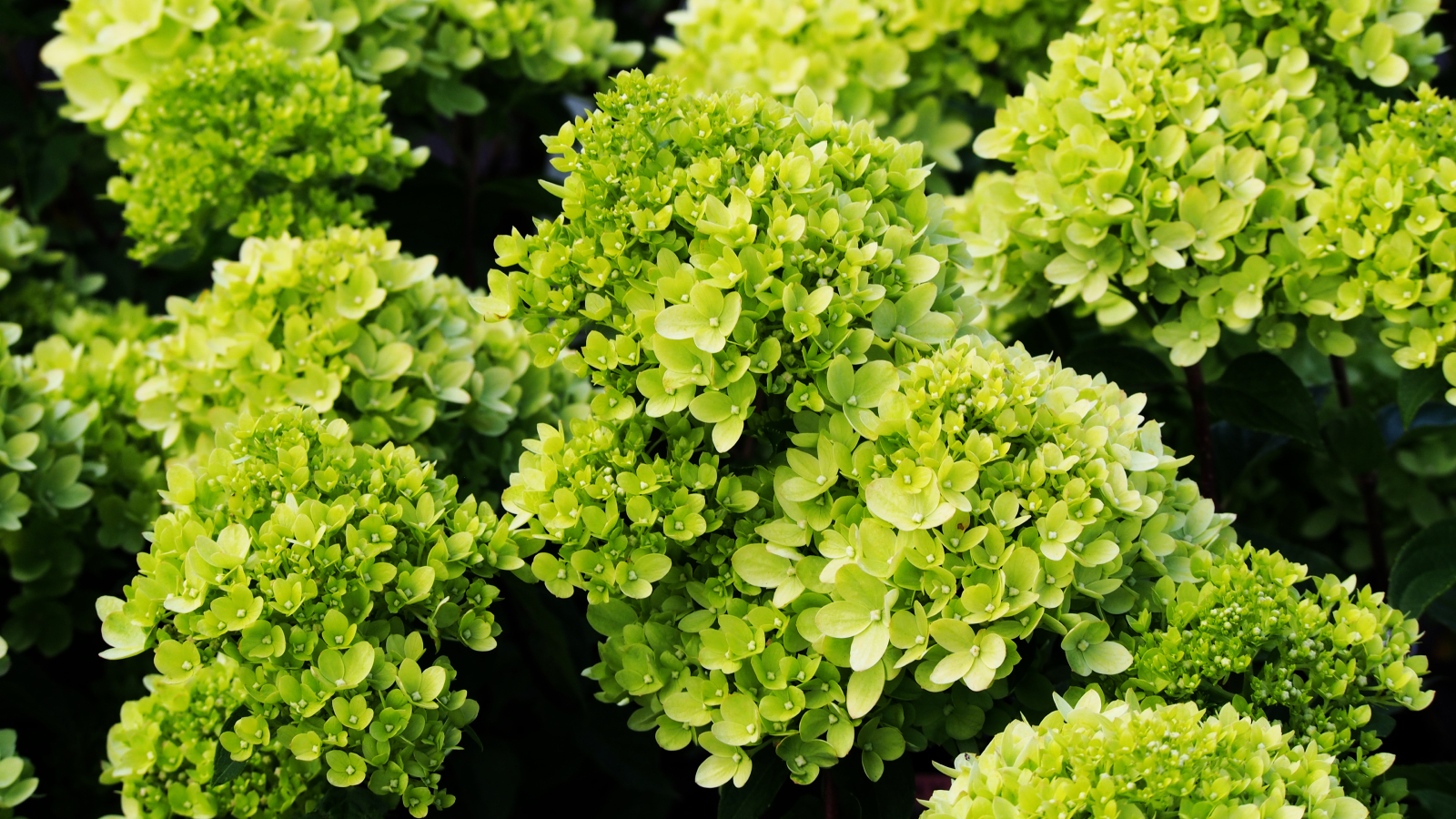

Laura Walters
Quick Facts
Botanical name: Hydrangea paniculata ‘Jane’ or ‘Little Lime’
Height: 3-5 feet (1-1.6m)
Spread: 3-5 feet (1-1.6m)
Sun exposure: Dappled sun
Soil requirements: Moist, well-draining soil
Hardiness zones: 3-9
When to plant: Early spring or fall
You may be familiar with the mophead hydrangea, famous for its huge, round flower clusters that can change colors (from blue to pink or pink to blue) as you change the acidity of the soil. Anyone who has tried this knows that changing soil acidity is not as fast and easy as Cinderella’s fairy godmother changing the color of her ballgown. It’s a lengthy process of mixing in soil additives over time.
If you want to see hydrangea flower colors change quickly—let’s say, over one season—then ‘Little Lime’ hydrangea is your plant. The huge panicles of flowers start out lime green, turn yellow as the season proceeds, then turn rose-red as they mature. No soil additions required! And flowers bloom from July through September.
Little Lime, which is a dwarf variety of the extremely popular ‘Limelight’ hydrangea, is perfect for smaller gardens and even for containers. This citrus-colored shrub shines in a pot on any porch or patio or tucked into a tight corner of the garden. Here’s how to grow panicle hydrangeas with gorgeous green blooms that turn to brilliant pink.
Little Lime Hydrangea Care
Growing hydrangeas, whether adorable dwarf varieties like Little Lime or classic mopheads, is generally simple. However, there is some basic information every gardener should know before planting one of these beautiful bushes in their landscape.
Light
Little Lime needs some sun to produce those gorgeous flowers, but it’s tolerant of how and when that sunshine arrives. Panicle varieties, like Little Lime, are some of the best full sun hydrangeas you can find.
All day dappled sun is fine for your shrub, but so is morning sun and afternoon shade. Little Lime will even accept full sun all-day, as long as you water it often enough to keep it from drying out.

Water
Of course, being a hydrangea, Little Lime needs plenty of water. How much it requires depends on its sun exposure, though. The more sun it gets, the more water it needs.
Sign up for the Gardening Know How newsletter today and receive a free copy of our e-book "How to Grow Delicious Tomatoes".
You may have to water hydrangeas several times a week if you plant them in a full sun location in a region with hot summers. In dappled shade and lower summer temperatures, once a week should do.
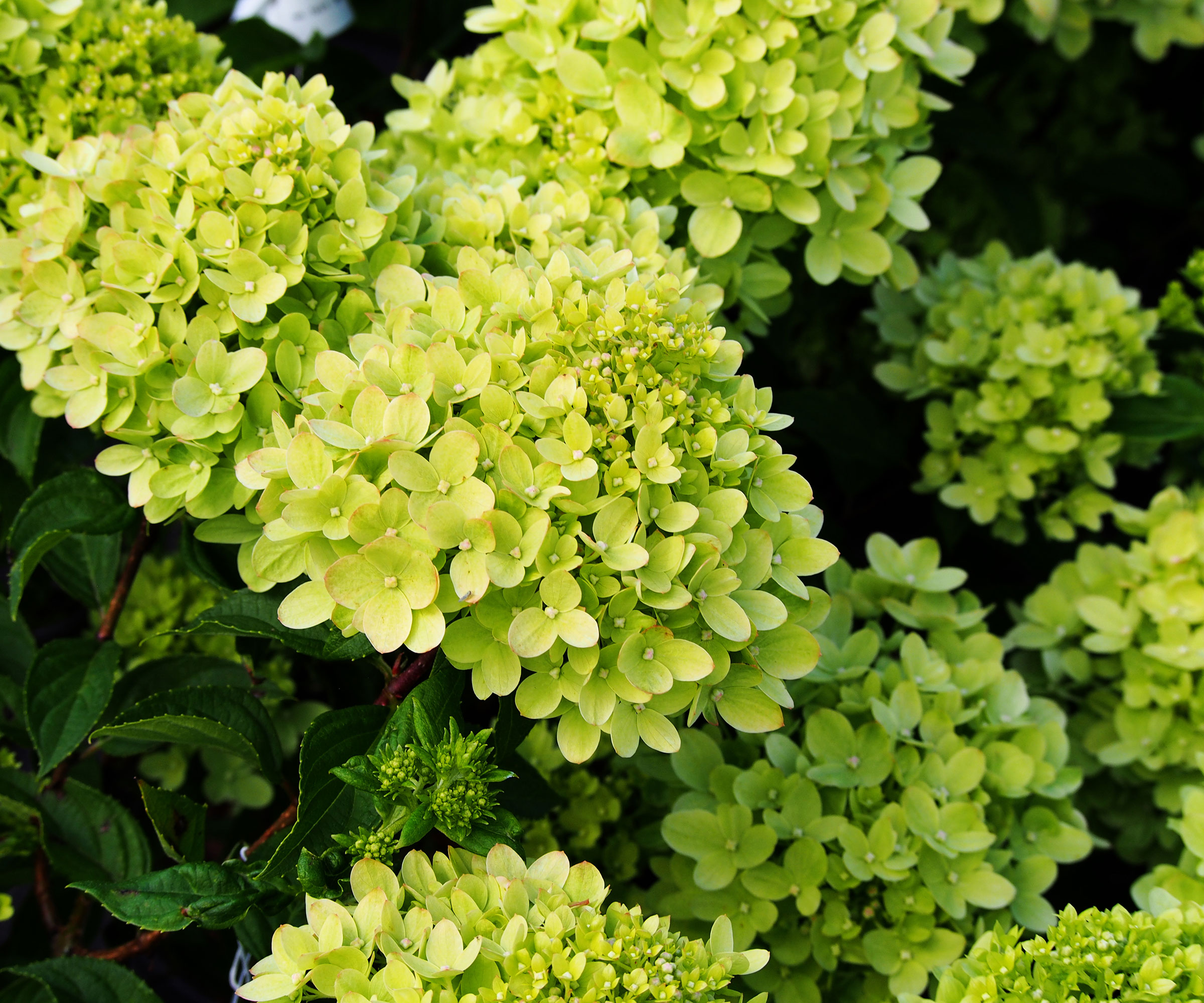
Temperature & Humidity
The hydrangea Little Lime is cold hardy and tolerates chilly winters down to USDA growing zone 3. It will also accept summer heat if you water it sufficiently. It’s one of the best hydrangeas for different zones ranging from cold to hot.
It is less tolerant of humidity than heat, though. High humidity is not good for hydrangeas and is the primary cause of fungal issues.
Soil
Well-drained soil is a must. Even better, plant Little Lime in well-draining soil that is rich in organic content and holds moisture. Mulch around your shrub to help hold moisture in the soil as well.
Add compost from your backyard stash or mix a bag of composted cow manure, like this one from Home Depot, into the planting hole when you first put your hydrangea in the ground. Reapply a few handfuls in spring around the base of the plant to give your shrub a boost for the summer season.
Fertilizer
I fertilize hydrangeas with a topping of organic compost. You can also use organic slow-release fertilizer, but opt for less, not more. Use a balanced organic fertilizer, like this one from Espoma at Home Depot, to feed the soil and plants.
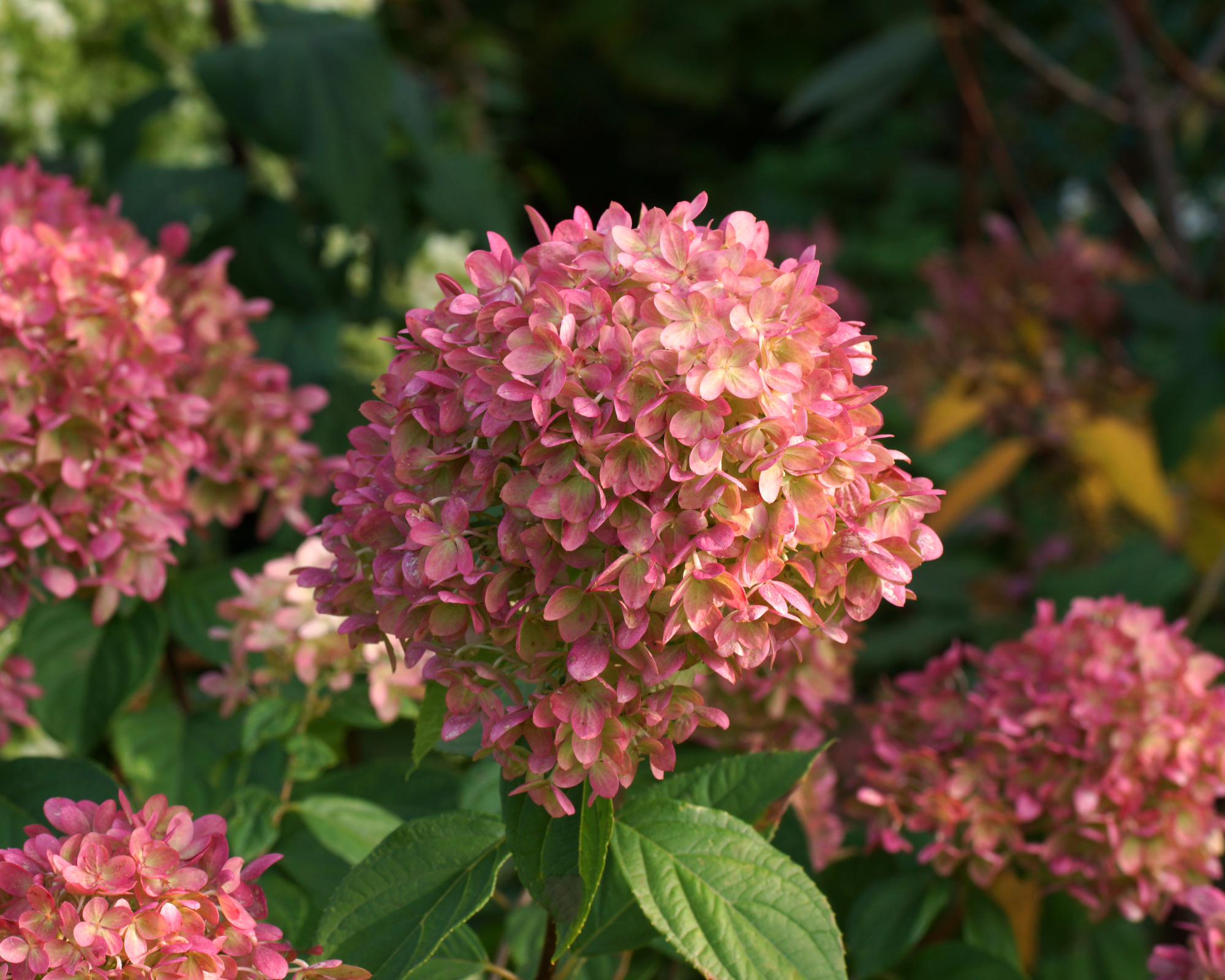
Problems, Pests & Diseases
If you plant Little Lime in a humid location, it may suffer from fungal problems, which are common hydrangea diseases. To help prevent these, make sure to space out shrubs wide enough to allow for good air flow between them and other plants.
The most likely pest problems for your hydrangeas will be those ubiquitous garden bugs, aphids, and occasionally mites that can be controlled with a Neem oil spray, like this one from Amazon.
Pruning
Prune Little Lime hydrangeas in late winter. Flowers buds set on new wood, or wood grown the same season. So if you prune the plant too late—in late spring or early summer—you will reduce the number of flowers or end up with a hydrangea that won’t bloom at all.
Propagation
Few shrubs are easier to propagate than hydrangeas. Almost all varieties, including panicle hydrangea Little Lime, root easily from stem cuttings. Propagate hydrangeas from cuttings in early autumn to get a head start on plants for the following spring.

Repotting
Given Little Lime is a dwarf hydrangea that tops out at about 4 feet (1.3m), you can easily grow this shrub in a large container. Growing hydrangeas in pots is a great way to add beauty to a balcony, porch, or patio.
There are tons of beautiful, large pots that will perfectly suit a small shrub like Little Lime. Our gardening experts love the Brunello Planter from Gardener’s Supply in the color Terra Cotta for a classic look that pops against the complementary green panicles of the Little Lime shrub.
After a few years of growing, you will need to repot. Enlist some help to lift the root ball and move the hydrangea into a new container. Replant your shrub into a container a few inches larger than the old one, add well-draining soil to the bottom, carefully transfer the hydrangea into the new container, then fill in around the edges with new soil. Water well and feed with a balanced fertilizer annually.
Shop Little Lime Hydrangeas
Frequently Asked Questions
Where is the best place to plant Little Lime hydrangeas?
Little Lime accepts a variety of light exposures. The best place to plant this type of hydrangea, though, is in a spot with full sun in the morning and shade in the afternoon. All day dappled sun is fine, too.
Do you cut back Little Lime hydrangea in the fall?
Little Lime grows flower buds on new growth. That means technically you could trim it at any time after the flowers fade in fall until early spring. However, it’s best to leave the plant as-is through late winter, then trim in early spring. If any branch tips die back in the winter, it won’t matter since you will be trimming them off anyways.
This article features products available from third party vendors on the Gardening Know How Shop. Keep in mind that our plant inventory is limited—so if you’re thinking of purchasing, don’t wait!

Teo Spengler is a master gardener and a docent at the San Francisco Botanical Garden, where she hosts public tours. She has studied horticulture and written about nature, trees, plants, and gardening for more than two decades, following a career as an attorney and legal writer. Her extended family includes some 30 houseplants and hundreds of outdoor plants, including 250 trees, which are her main passion. Spengler currently splits her life between San Francisco and the French Basque Country, though she was raised in Alaska, giving her experience of gardening in a range of climates.
- Laura WaltersContent Editor

